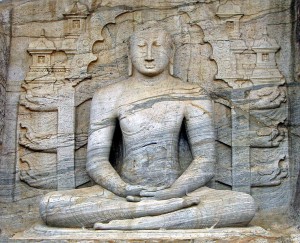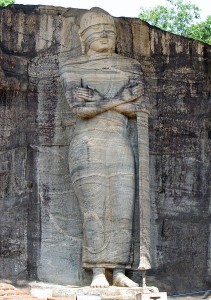Recently we marked the passage of another Columbus Day. Fortunately a number of states no longer celebrate this travesty(instigated by the Catholic lay group, Knights of Columbus, lobbying President Roosevelt to create “Columbus Day”), but too many still do celebrate this day and current school history books still carry a distorted and sanitized view of this man. Certainly for those who are as old as me have experienced this “unreality” being taught to us in grade school and even high school without even a trace of what Columbus was really all about. What’s truly sad and mind boggling is that there are quite a few people who still today defend the myth and laud the man as one of the greats of history. And what a shame that this takes place in Christian and especially Catholic circles. And the role of the Church in all this is not pretty reading. To be liberated from the myth and to come a bit closer to the truth I would suggest that you read this book: An Indigenous Peoples’ History of the United States by Roxanne Dunbar-Ortiz.
Let us consider a few historical facts–primarily to begin to understand why we are where we are and why we are the way we are. It is not an encouraging picture. So Columbus first lands on an island which is among what is known today as the Bahamas, and there encounters his first indigenous inhabitants of the new land (or of Asia as he first thought). Here he is in his own words: “They do not bear arms, and do not know them, for I showed them a sword, they took it by the edge and cut themselves out of ignorance. They have no iron. Their spears are made of cane. They would make fine servants. With fifty men we could subjugate them all and make them do whatever we want.” So his intentions are bad from the get-go, and it’s not the fact that he simply lost control of his men. The expedition’s main purpose was to get wealth: slaves and gold. Here is Own McCormick writing in Truthout on the sanitization of this history:
“With an extensive arsenal of advanced weaponry and horses, Columbus and his men arrived on the islands that were later named Cuba and Hispaniola (the latter, present-day Dominican Republic and Haiti). Upon arrival, the sheer magnitude of gold, which was readily available, set into motion a relentless wave of murder, rape, pillaging and slavery that would forever alter the course of human history. A young, Catholic priest named Bartolomé de las Casas transcribed Columbus’ journals and later wrote about the violence he had witnessed. The fact that such crimes could potentially go unnoticed by future generations was deeply troubling to him. He expanded upon the extent of Columbus’ reign of terror within his multivolume book, History of the Indies:
‘There were 60,000 people living on this island, including the Indians; so that from 1494 to 1508, over 3,000,000 people had perished from war, slavery, and the mines. Who in future generations will believe this? I myself writing it as a knowledgeable eyewitness can hardly believe it.’”
Thom Hartmann writing also in Truthout puts it more succinctly and in very timely terms: “Christopher Columbus was the ISIS of his day. He justified rape, murder and pillage with religion and funded his efforts with whatever he could steal.” Columbus was also making money from the child-sex-trade. In a letter to a friend he wrote this in 1500: “A hundred castellanoes (a Spanish coin) are as easily obtained for a woman as for a farm, and it is very general and there are plenty of dealers who go about looking for girls; those from nine to ten (years old) are now in demand.”
Thom Hartmann again: “Eventually, Columbus resorted to wiping out the Taino altogether. Prior to Columbus’ arrival in the New World, scholars place the population of Haiti/Hispaniola at around 1.5 to 3 million people. By 1496, it was down to 1.1 million, according to a census done by Bartholomew Columbus, Columbus’ brother. By 1516, the indigenous population was at 12,000, and by 1542, fewer than 200 natives were alive on Hispaniola. By 1555, every single native was dead. Every last one.” This was basically state-sponsored genocide, sponsored by the Catholic state of Spain.
But now let us look at the “theory” you might say behind such activity, the idea that drove this activity and all colonization by all the European nations. There is a little-known principle in western law known as the “Doctrine of Discovery,” which allows the major powers to subjugate, exploit and ultimately without saying it explicitly to exterminate indigeneous peoples. Listen to Professor Roxanne Dunbar-Ortiz explain it:
“According to the centuries-old Doctrine of Discovery, European nations acquired title to the lands they “discovered,” and Indigenous inhabitants lost their natural right to that land after Europeans had arrived and claimed it. Under this legal cover for theft, Euro-American wars of conquest and settler colonialism devastated Indigenous nations and communities, ripping their territories away from them and transforming the land into private property, real estate. Most of that land ended up in the hands of land speculators and agribusiness operators, many of which, up to the mid-nineteenth century, were plantations worked by another form of private property, enslaved Africans. Arcane as it may seem, the doctrine remains the basis for federal laws still in effect that control Indigenous peoples’ lives and destinies, even their histories by distorting them. “
You might be saying to yourself that surely the Church was not part of this and that later the United States of America did not recognize any such “doctrine.” But then you would be wrong! (The only “bright light” in the Church at this time was the Dominican De Las Casas who championed the cause of the Native Peoples–why he is not canonized but some of these popes are I cannot figure out). Professor Dunbar-Ortiz again:
“From the mid-fifteenth century to the mid-twentieth century, most of the non-European world was colonized under the Doctrine of Discovery, one of the first principles of international law Christian European monarchies promulgated to legitimize investigating, mapping, and claiming lands belonging to peoples outside Europe. It originated in a papal bull issued in 1455 that permitted the Portuguese monarchy to seize West Africa. Following Columbus’s infamous exploratory voyage in 1492, sponsored by the king and queen of the infant Spanish state, another papal bull extended similar permission to Spain. Disputes between the Portuguese and Spanish monarchies led to the papal-initiated Treaty of Tordesillas (1494), which, besides dividing the globe equally between the two Iberian empires, clarified that only non-Christian lands fell under the discovery doctrine. This doctrine on which all European states relied thus originated with the arbitrary and unilateral establishment of the Iberian monarchies’ exclusive rights under Christian canon law to colonize foreign peoples, and this right was later seized by other European monarchical colonizing projects. The French Republic used this legalistic instrument for its nineteenth- and twentieth-century settler colonialist projects, as did the newly independent United States when it continued the colonization of North America begun by the British. In 1792, not long after the US founding, Secretary of State Thomas Jefferson claimed that the Doctrine of Discovery developed by European states was international law applicable to the new US government as well. In 1823 the US Supreme Court issued its decision in Johnson v. McIntosh. Writing for the majority, Chief Justice John Marshall held that the Doctrine of Discovery had been an established principle of European law and of English law in effect in Britain’s North American colonies and was also the law of the United States. The Court defined the exclusive property rights that a European country acquired by dint of discovery: “Discovery gave title to the government, by whose subjects, or by whose authority, it was made, against all other European governments, which title might be consummated by possession.” Therefore, European and Euro-American “discoverers” had gained real-property rights in the lands of Indigenous peoples by merely planting a flag.” A figure no less than Martin Luther King put it bluntly: “Our nation was born in genocide. . . . We are perhaps the only nation which tried as a matter of national policy to wipe out its indigenous population. Moreover, we elevated that tragic experience into a noble crusade. Indeed, even today we have not permitted ourselves to reject or feel remorse for this shameful episode.”
Now the question we are left with is where was the Christian community, the Church, in all this? Hard to answer. Even Church intellectuals and theologians and most of those saints we canonized in this era were silent about this murderous push by Western Civ into the “New World.” Only marginal church bodies like the Quakers and Unitarians have denounced the “Doctrine of Discovery” and its continuing influence on our law(also the Episcopalians). Strange that today we are so obsessed about the “War on Terror,” all those terrorists out there…..when we, Western Civ, were the most efficient practitioners of Terrorism.


